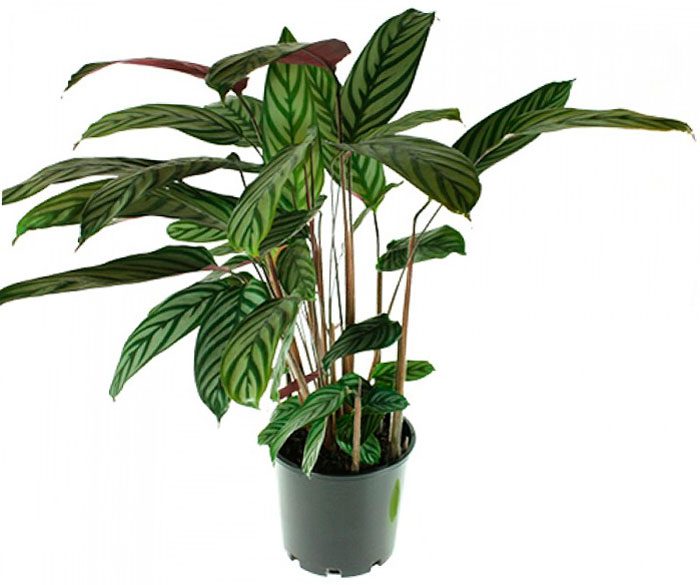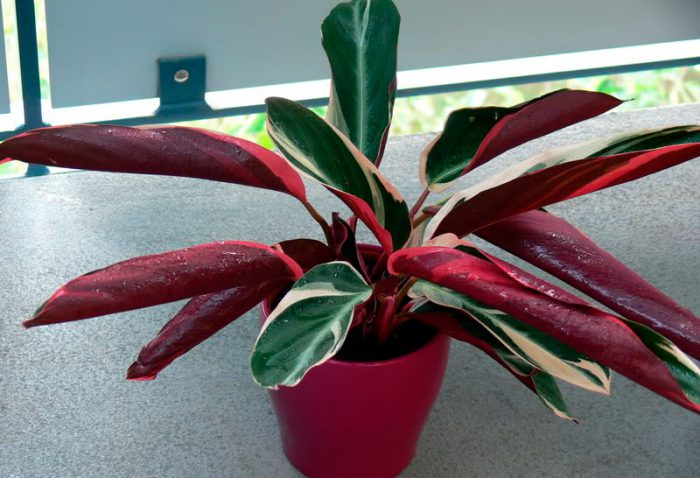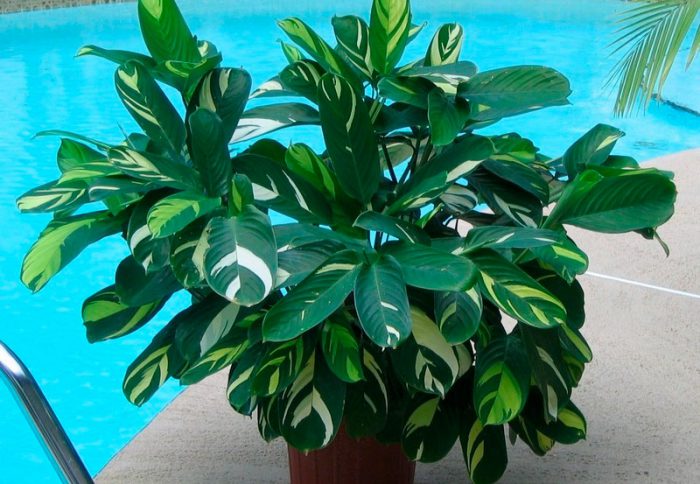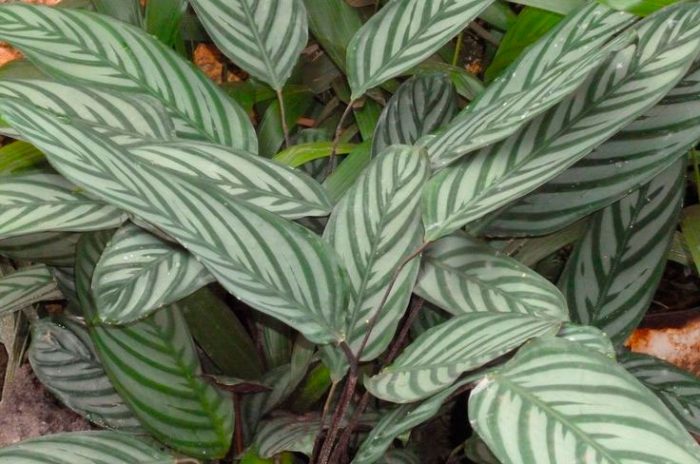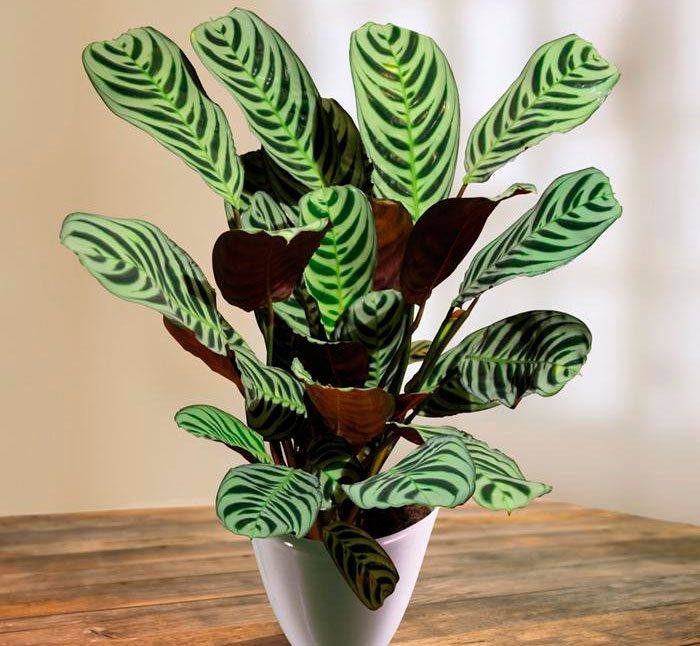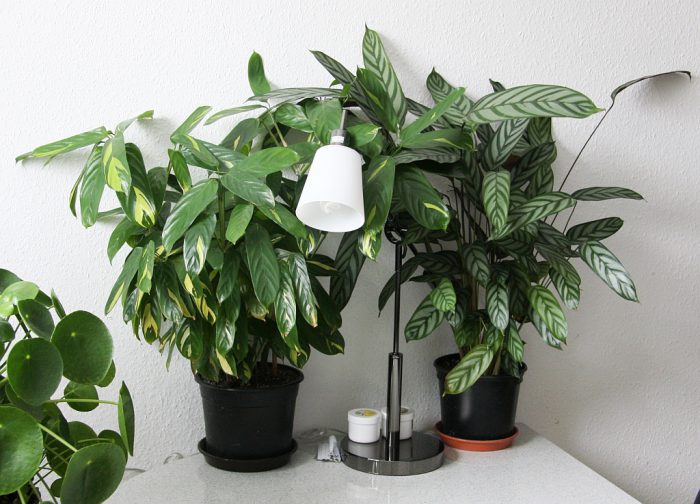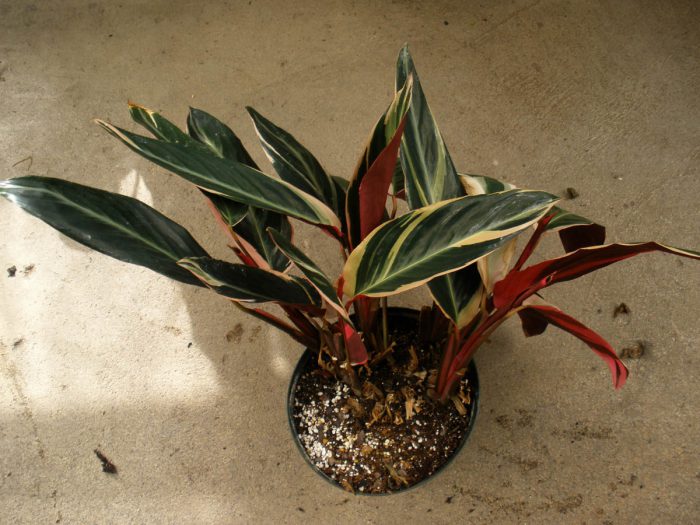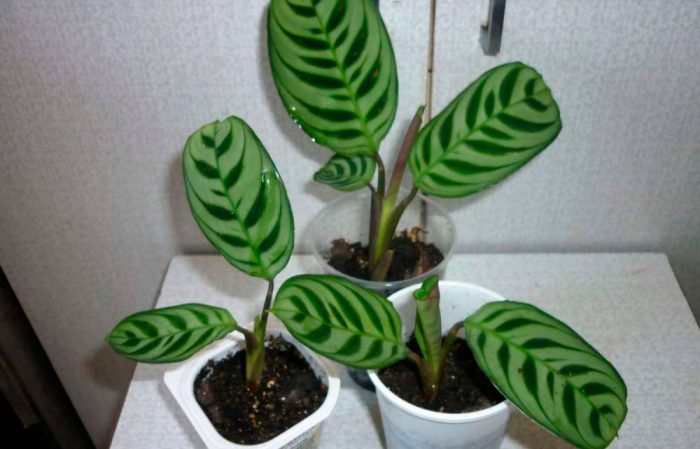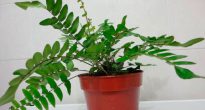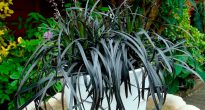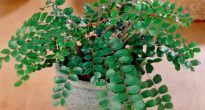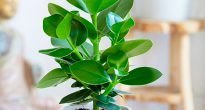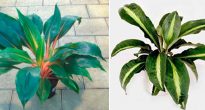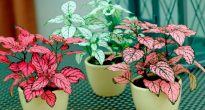A perennial herb like ktenant (Ctenanthe) or ktenante is directly related to the arrowroot family. Under natural conditions, it can be found in the tropical rainforests of South America. The genus ctentante unites 15 species of plants that are evergreen.
This plant can be easily confused with calathea, which also belongs to the arrowroot family. These flowers are very similar to each other, and even botanists cannot come to a consensus regarding their classification. These plants differ in the structure of flowers, however, when kept in room conditions, flowering is quite rare. By purchasing a ktenant in a flower shop, you can easily buy calathea, since it is almost impossible to distinguish them. Interestingly, the care for all representatives of the arrowroot is very similar.
This plant is appreciated for its spectacular leaves. Dark green, whole, rather long leaves have many stripes on the surface, diverging asymmetrically from the central vein to the edges. These stripes can be colored yellow, pale green or silver.
It is noteworthy that the leaves of such a plant are quite mobile. Following the rays of the sun, they can rise and fall.
The flowers are of no decorative value. Inflorescences are similar to a spikelet or scallop.
Main types
Ctenanthe oppenheimiana
The most popular type in home floriculture. This plant in natural conditions can reach a height of 90 meters. Patterned leaves are located on rather long petioles and have a spear-like shape. Velvety leaves with an oblong shape reach 40 centimeters in length. Their stripes are creamy silver or pale green. The leaves are painted asymmetrically, and their seamy side is purple.
Ctenanthe lubbersiana
A very effective color of the leaves - yellow feather-shaped specks. The seamy side of the leaf is colored green. It reaches 80 centimeters in height, there are also more compact forms (up to 30 centimeters).
Pubescent ktenanthe (Ctenanthe setosa)
Dark green elongated leaves are ovoid. The stripes located on them are painted in gray or light green. They radiate from the midrib in the form of brush strokes. The plant reaches a height of 80 centimeters.
Caring for a ktenant at home
It is not at all easy to look after a ktenant in room conditions, since she is quite capricious. Under natural conditions, it grows in the lower tier of a tropical rainforest. A plant in an apartment needs to provide similar conditions, namely: high air humidity, constant temperature and complete absence of drafts. In such a microclimate, this plant looks most impressive, like the rest of the arrowroot.
Illumination and location
It can grow in a well-lit place and in partial shade. So, it is recommended to place it on the window located in the western part of the room. But you can also place it near the northern window opening. And also a ktenanta can grow on a dummy table located not far from the southern window, while shading from direct sunlight is needed.
It should be remembered that in no case should this flower be placed near a window that is opened to ventilate the room, since it has an extremely negative attitude towards drafts.
Temperature regime
Ktenanta needs warmth. All year round, it is necessary to maintain a temperature of 20-25 degrees, while there should be no difference between night and day temperatures (or very small). This flower cannot be taken out on the balcony or outside, even in the warmest weather.
Humidity
A very moisture-loving plant for which frequent spraying is recommended. If the air is too dry, the foliage will begin to curl. Experts advise to systematically arrange a warm shower for the flower, but it should be borne in mind that no drops should remain on the leaves.
How to water
Need regular, moderate watering. For this, soft settled water is used. Make sure that the water in the soil does not stagnate, and that the earthy coma does not dry out. It is necessary to water with cold water.
In the event that the room is somewhat cooler in winter than in summer, then watering should be slightly reduced.
Top dressing
Make sure that there is no excess fertilizer in the soil. You need to feed the ktenant from April to August 2 times a month. To do this, use a liquid complex fertilizer for home decorative deciduous plants (use ½ part of the recommended dose). In winter, top dressing is carried out once every 4 weeks.
How to transplant
The transplant is carried out every year in the spring. For this, use wide flower pots. Don't forget about good drainage. Experts advise covering the rhizome with moistened moss.
Earth mix
The soil should be slightly acidic and loose. A soil mixture suitable for ktenants consists of peat, coniferous, leaf and humus soil, as well as a small amount of sand taken in a ratio of 1: 1: 2-3: 1. You can also use a soil mixture consisting of turf, leaf, humus and sand, taken in equal shares.
Small pieces of charcoal should be added to the soil. You can buy a ready-made mortar for arrowroot.
Reproduction methods
This plant is propagated very simply. In spring, when transplanting, you can divide its rhizome. Until complete rooting, the delenki should be covered with a polyethylene bag and removed to heat, while watering should be scanty. And that's all, because until the ktenants have roots, she takes very little water from the substrate. During rooting, all the foliage may fall off, but after it the leaves begin to grow very quickly.
Apical rosettes are also rooted in miniature greenhouses. There should be 2 or 3 leaves on the cutting and it must be cut off slightly below the place where the leaf is attached to the shoot. It also takes root well in water.
Diseases and pests
Can settle scabbards... In this case, brownish tubercles appear on the shoots and foliage. The leaves turn pale, dry up and fall off.
Red can still settle spider mite, but only if the humidity in the room is too low. It is recommended to use an insecticide to kill this harmful insect.
Possible problems
- Brownish dry tips near foliage - low air humidity.
- Falling foliage - low air humidity or excessive watering, due to which the root system and shoots have rotted.
- The leaves become pale - very bright lighting (needs to be moved to the shade) or too dark.
- The foliage forms stains and rolls up into tubes - low humidity and poor watering. It is recommended to cover the plant with a polyethylene bag until the leaves are straightened. In some cases, you have to remove almost all the leaves (do not touch the sockets), but after a while they grow back.
- Young leaves are rather small - lack of light. It is recommended to place the ktenant in a brighter place.

